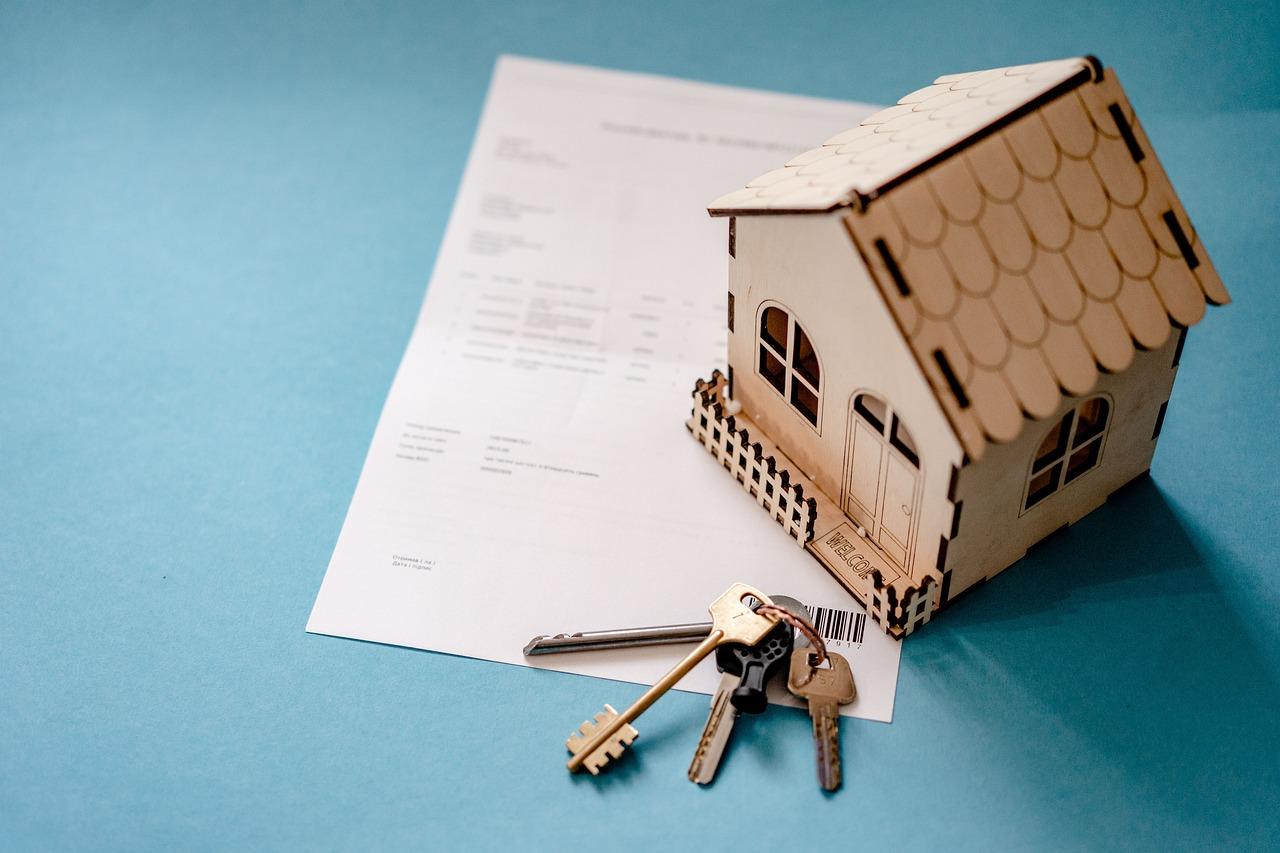The property market is influenced by many factors: external and internal political, economic and social. Over the last decade there have been many events and upheavals that have had a direct impact on the housing sector in Cyprus in general and in Nicosia in particular. Let's take a look at how demand and property prices have changed over the last 10 years and what has influenced their formation.

2015-2016 - Recovery from the banking crisis
The banking crisis of 2013 affected all aspects of life in Cyprus. Many banks closed, unemployment rose to a record 17%, purchasing power fell, which had a significant impact on the property market. The crisis led to financial instability, a loss of confidence among potential investors and a drop in demand from both local and foreign buyers.
Many mortgage holders were unable to pay their mortgages and were forced to sell their homes at a lower value. This also led to foreclosures and sales of mortgaged properties by banks, further depressing prices. There was a decline in foreign investment as a result of the instability in the property market, which affected the Paphos and Limassol markets to a greater extent. To a lesser extent, Nicosia, which is almost entirely dependent on local demand. Construction projects came to a halt and slowed down. Due to insufficient financing and low demand, many developers have suspended or frozen projects indefinitely, resulting in unfinished buildings. Nicosia and Limassol were particularly affected. Since the second half of 2015, the property market has gradually started to grow, supported by the stabilisation of the banking sector and the economic environment, as well as government initiatives to attract foreign investment (Permanent Residency for Investment Scheme).
The government initiative to attract foreign investors was first launched in 2012, offering permanent residency for residential property investments of €300,000. By 2015-16 it had become particularly popular with investors from Russia, China and the Middle East, helping to increase demand and interest among foreign property buyers. Although the investor scheme has not had a strong impact on the Nicosia market due to the low level of foreign investment, the reduction in mortgage interest rates has helped to increase the number of transactions in the capital.
Improvements in the system for issuing title deeds also had a positive impact on the number of sales. After a slight dip in the first half of 2015, property prices in Nicosia stabilised towards the end of the year and continued to rise in 2016. According to the Cyprus Land Department, residential property sales increased by 24% across the island in the first quarter of 2016 and by 23.6% in Nicosia, where some 215 contracts were signed. According to the Central Bank of Cyprus, the average price of houses on the island fell by 1-3% in 2015 to €372,714.
Statistics for 2015
Residential property prices (annual changes, according to Central Bank of Cyprus statistics):
- The average house price fell by 1-3% in Nicosia and by 1-2% in Limassol. On the other hand, it increased by 1-2% in Paphos and remained unchanged in Larnaca.
- The average price of an apartment fell by 3-5% in Nicosia, by 2-4% in Limassol, by 1-3% in Larnaca and remained unchanged in Paphos.
Property rental prices (annualised year-on-year changes according to Ask WiRE index and RICS statistics)
- The rental price of apartments increased by 1-3% in Nicosia, by 3-5% in Limassol, by 1-2% in Larnaca and remained unchanged in Paphos.
- The rental value of houses remained unchanged in Nicosia, Paphos and Larnaca and increased by 2-4% in Limassol.
Total transaction volume (annualised year-on-year changes according to PWC statistics):
- Increased by 5-8% over the year in Nicosia, 8-12% in Limassol, 6-9% in Larnaca and 10-18% in Paphos.
Construction of new projects (annualised year-on-year changes according to the Cyprus Statistical Service):
- Decreased by 10-15% in Nicosia, 5-8% in Limassol, 7-10% in Larnaca and 3-6% in Paphos.
Key trends:
- Increased demand for rental properties, especially in central Nicosia, as more people chose to rent rather than buy due to economic instability.
- Fewer new developments as developers focused on selling existing properties.
- Smaller houses and apartments became more popular than larger ones.
- Demand for elite properties fell.
- Demand for flats to buy fell, while demand for flats to rent rose.
- Demand for buying and renting houses remained unchanged.
- The share of foreign investors in Nicosia remained quite low compared to the coastal cities and was around 5-7% in 2015 and only increased by 1-2% in 2016.

2017-2019 - Growth and optimism in the property market
According to the PWC annual report, the Cypriot economy began to stabilise in the first quarter of 2017, with seasonal GDP growth of 0.9%, leading to annual GDP growth of 3.9%. Unemployment remained at a relatively high level of 10.2%, but was significantly lower than in previous years.
Interest rates on loans and mortgages declined. Local banks became more willing to lend. In the first three quarters of 2017, they lent around €2.1 billion to the population. Growing confidence in the banking sector, falling unemployment and economic growth have had a positive impact on the property market. According to the Land Department, the total number of property transactions across Cyprus increased by 1.9% to 15.8 thousand transactions in 2018. Investment in Cypriot property in 2018 almost quadrupled compared to 2013 figures.
Thanks to a government programme to attract foreign investment, the property markets of Paphos and Limassol were on the upswing and had the best performance, with the highest volume of transactions and the highest percentage of construction projects. In 2017-18, the property market in Nicosia continued to grow, with property prices rising steadily, rental demand increasing and investor activity increasing.
While 2017 was a year of stabilisation for the economy and the property sector, 2018 saw strong growth, particularly in the prices of apartments and studios, and rental income also continued to rise. The positive momentum of 2017 continued into 2018. The Nicosia property market experienced moderate but steady growth, thanks to lower mortgage rates. Overall, 2018 was a more positive year for Nicosia than 2017, with faster growth in property prices and demand, and an increase in the number of transactions.
Statistics for 2017
House sale prices (year-on-year changes, according to Central Bank of Cyprus statistics):
- House sale prices increased by 1-3% in Nicosia, by 3-5% in Limassol, by 2-4% in Larnaca and by 4-6% in Paphos.
- Prices for apartments increased by 2-4% in Nicosia, 5-7% in Limassol, 3-5% in Larnaca and 6-8% in Paphos.
Rental property prices (annualised y/y changes according to Ask WiRE index and RICS statistics):
- House rental prices increased by 2-4% in Nicosia and Larnaca, 4-6% in Limassol and 3-5% in Paphos.
- Apartment rental prices increased on average by 4-6% in Nicosia, 6-9% in Limassol, 3-5% in Larnaca and 5-7% in Paphos.
Total property transactions (annualised y/y changes according to PWC statistics):
- Up 10-12% in Nicosia, 15-20% in Limassol, 12-14% in Larnaca and 18-22% in Paphos.
New housing projects (annualised year-on-year changes according to the Cyprus Statistical Service):
- Building permits for new residential projects increased by 8-10% in Nicosia, 12-15% in Limassol, 10-12% in Larnaca and 14-18% in Paphos.
Key trends:
- The government's programme to attract foreign investors did not have a strong impact on the Nicosia property market. The percentage of foreign investors in the residential sector remained quite low compared to the coastal cities.
- Local buyers and investors have become more active due to the improvement in the island's economy and favourable mortgage conditions.
- Demand for apartments has increased, particularly for small studios.
- The increase in the number of universities and their modernisation has led to a significant increase in the number of students, which has contributed to increased demand for small apartments and studios.
- Increased demand for suburban and student accommodation properties. Demand for the sale and long-term rental of suburban homes has increased due to young professionals and lower unemployment, as well as students.
- Demand for student accommodation and low-cost housing has increased.
- Investor confidence in the property market has increased.
- Demand for apartments exceeded that for houses. Rental income from apartments was higher than that from houses.

2019-2020 - Market resilience during a pandemic
In 2019, the capital's property market continued its positive growth momentum across all sectors: property sales and rentals, construction of new projects and transaction volumes.
Nicosia, for example, issued around 37% of the total number of building permits on the island during the year. New property construction was active in the capital. There was also an increase in demand from the local population, which benefited the Nicosia market, which led other cities with 28% of the total share of local buyers and investors.
The 2020 crisis, linked to the coronavirus pandemic and the suspension of the government's Cyprus Investment Programme on 1 November that year, had less of an impact on the capital's property market, which proved unusually resilient to these changes. As in previous years, Nicosia's property market was almost entirely dependent on local demand, with a rather small share of foreign investment.
The Cypriot economy also remained relatively stable thanks to government support measures. According to the annual PWC report, the unemployment rate rose slightly by only 0.0 per cent year-on-year. Although the tourism sector was most affected by the coronavirus restrictions, other sectors of the economy, such as professional services and transport, continued to grow.
Paphos and Limassol, which are more dependent on foreign investors, experienced a significant drop in demand for property sales and purchases due to the pandemic and the cancellation of the Overseas Investor Programme (CIP). In contrast, the property market in Nicosia remained stable and even recorded a slight increase. According to the Central Bank of Cyprus and RICS, house sale prices in Nicosia rose by an average of 1% and total sales volume increased by 3%. According to PWC's annual report, Nicosia ranked second in terms of the number of residential transactions in 2020 (2,054 units), behind Limassol, which recorded 2,480 transactions.
Statistics for 2020
House sale prices (annual changes, according to Central Bank of Cyprus statistics):
- House sale prices rose by 0.5-1% in Nicosia, but fell by 2.7% in Limassol, 0.8% in Larnaca and 1.6% in Paphos.
- Prices for apartments increased by 3.4% in Nicosia, by 2.4% in Limassol, by 6% in Larnaca, but fell by 3% in Paphos.
Rental prices (annualised changes according to Ask WiRE index and RICS statistics):
- On average, house rental prices fell by 1% in Nicosia, by 4-15% in Limassol and by 2% in Larnaca and Paphos.
- Apartment rents fell on average by 1% in Nicosia and by 4% in Limassol, 3% in Paphos and 2% in Larnaca.
Total property transactions (annualised Y2Y changes according to PWC statistics):
- Down 12% in Nicosia, 36% in Limassol, 47% in Paphos and 16% in Larnaca.
New building projects (annualised change over the previous year, according to the Cyprus Statistical Service):
- The number of construction projects decreased by 5% in Nicosia and by 10% in Limassol, while Paphos and Larnaca recorded increases of 20% and 15% respectively.
Key trends:
- Nicosia was the only Cypriot city to see an increase in property sales of around 3%, while other cities saw a rather sharp decline.
- Demand for rental apartments and houses remained fairly stable in 2020. There was a slight decrease in demand in the lower price segment and a more significant decrease in the elite segment.
- There was an increase in demand for the purchase of dwellings with an average price of 100-300 000 euros. It is this price segment that has contributed to the growth of the capital's property market.
- Paphos and Limassol saw the biggest falls in transaction volumes. These cities suffered the most from the closures during the pandemic and the end of a programme to attract foreign investors. Nicosia, on the other hand, recorded a moderate decline.
- Foreign investors accounted for only % of the total transaction volume in Nicosia in 2020.

2021-2022 - Relative stability against inflation
According to CYSTAT, annual inflation reached 8.4% in 2022. This was partly due to an increase in tourism after the pandemic period, but more so due to the sanctions imposed by the US and the EU on Russia, which led to a significant increase in energy prices. In particular, electricity prices rose by 44% in 2022, petrol prices by an average of 26.8% and LPG fuel by 34.55%. Rising inflation has significantly eroded the purchasing power of Cypriots, while rising prices for raw materials and construction materials have slowed or halted construction projects.
According to the Central Bank of Cyprus, the average increase in the property price index was 7.4% in 2022, indicating that demand for property outstripped supply. As a result, there was a surge in property rental prices, particularly in Nicosia, which led the growth in rental prices for apartments and houses. There was a steady increase in sales of apartments in the 100,000 euro to 300,000 euro price range. This was driven by strong demand for primary residences, as well as increased investment in private rented accommodation, mainly flats, and an increase in the number of expats. This trend has fully affected Nicosia, which has become a more popular destination for expats between 2021 and 2022, thanks to the development of commercial activities, the opening of foreign companies and start-ups in the capital. In particular, property in Nicosia has started to gain popularity among foreign investors, thanks to government initiatives and favourable tax conditions.
Statistics for 2022
Property sales prices (year-on-year changes, according to Central Bank of Cyprus statistics):
- Flat sale prices rose by 2.9% in Nicosia, 7.9% in Limassol, 6.9% in Larnaca and 7.2% in Paphos.
- Prices for the sale of houses rose by 2.9% in Nicosia, 7.1% in Limassol, 3.3% in Larnaca and 10.4% in Paphos.
Rental prices (annualised changes according to Ask WiRE index and RICS statistics);
- Apartment prices rose by an average of 18.9% in Nicosia, 7.6% in Larnaca, 16.2% in Paphos and 10% in Limassol.
- House prices rose by an average of 11.6% in Nicosia, 5.3% in Larnaca, 6.4% in Limassol and 12.2% in Paphos.
Total property transaction volume (annualised Y2Y changes according to PWC statistics):
- Total transaction volume decreased by 6% in Nicosia, while it increased by 18%, 31% and 23% in Limassol, Paphos and Larnaca respectively.
New construction projects (annualised year-on-year changes according to the Cyprus Statistical Service):
- The number of building permits for residential projects in Nicosia increased by 10.4%, while in Limassol, Paphos and Larnaca it decreased by 5%, 12.6% and 19.8% respectively.
Key trends:
- An increase in new construction in Nicosia and a decrease in construction activity in the coastal towns.
- Nicosia leads the statistics in terms of residential property rental price growth.
- The increase in the price of construction materials and the excess of demand over supply led to a significant rise in property prices, especially in Nicosia.
- There was an increase in demand for 2-bedroom flats, which were the most sought after for purchase, followed by studios and 1-bedroom flats.
- The highest demand for flats was for new-build flats, which accounted for 69% of the total transaction volume.
- Sales of apartments in Nicosia accounted for 72% of the total number of transactions.
- Nicosia has started to gain popularity among foreign investors, especially from outside the EU.

2023-2024 - Growth in demand for prime properties
According to PWC's annual report, the Cypriot economy grew moderately. GDP grew by 3.0%. The tourism, construction and retail sectors continued to grow strongly, driven by increased investment. Unemployment was at a relatively low level of %. Inflation also declined from the previous year to 2.2 %. These favourable economic conditions helped to attract investors and boost sales in the property market.
Property in Cyprus has become one of the most sought after and profitable in Europe. For example, according to RICS, annual rental income from apartments on the island exceeded % in the second quarter of 2023. As a result, the island is once again attracting more foreign investors. But while in the first half of 2010 the foreign market was dominated by Russian and British buyers, in recent years the share of investors from Israel, Lebanon and EU countries has increased. The share of foreign investors in Nicosia has also increased. In 2023, 6.9 thousand properties in Cyprus were bought by foreigners (+16%) compared to the previous year.
Also in 2024, the share of local buyers of property in the capital was about 82.8% and foreign buyers 17.1%, whose number has increased by more than 10% in recent years. The premium segment of the Cypriot property market has started to gain popularity. In the second quarter of 2024, around 18% of all transactions were in premium properties.
In the capital, demand for premium properties has also increased. According to official data, 705 residential property transactions took place in Nicosia in the first quarter of 2024, of which 19%, or 136 properties, were in the premium segment of the market. According to PWC's annual report, the Cypriot property market will see moderate growth in 2024, with Nicosia and Larnaca leading the way in terms of sales. Thus, in the first quarter of 2024, % of all sales, some 849 transactions in Cyprus, took place in the metropolitan market. The number of total sales in Cyprus in 2024 also increased by 1.5%. According to the Central Bank of Cyprus, the house price index for the third quarter of 2024 was 113.62.
Statistics for 2024
House sale prices (annual changes, according to Central Bank of Cyprus statistics):
- House sale prices rose by 4.8% in Nicosia, 2.1% in Limassol, 7.1% in Paphos and 6.6% in Larnaca.
- Prices for apartments rose by 4.3% in Nicosia, 6.3% in Limassol, 21.4% in Paphos and 18% in Larnaca.
Rental prices (annualised year-on-year changes according to Ask WiRE index and RICS statistics):
- House prices rose by 4.8% in Nicosia, 6.4% in Limassol, 5.7% in Paphos and 9.5% in Larnaca.
- Apartment prices rose by 4.8% in Nicosia, 9.3% in Limassol, 8.3% in Paphos and 7.6% in Larnaca.
Total transaction volume (annualised year-on-year changes according to PWC statistics):
- Up 13.6% in Nicosia, 5.4% in Larnaca, 1.2% in Limassol and 7.9% in Paphos.
New building projects (annualised change over the previous year, according to the Cyprus Statistical Service):
- The number of building permits rose by 14.3% in Nicosia, 32.7% in Limassol, 65.9% in Paphos and 107.5% in Larnaca.
Key trends:
- Increasing demand for premium housing in Nicosia.
- Nicosia is becoming an important strategic centre for both local and foreign investors due to infrastructure development and new commercial and residential projects.
- Demand for apartments in Nicosia, particularly in the city centre, continues to grow.
- Larnaca has become the absolute leader in terms of new construction projects, with double the number, while Nicosia has seen moderate growth.
- In 2024, Nicosia became the leader among other Cypriot cities in terms of sales volume.
- Apartment sales accounted for the majority of sales in Nicosia, due to the growing popularity of living in the city centre and the construction of new residential apartments.

Forecast for 2025
According to analysts, 2025 promises to be a good year for the property market. The positive trend of the last few years of rising property prices, especially for apartments, will continue this year. Prices are expected to increase in 2025. In Nicosia, experts believe that demand will increase for apartments in the city centre, both in the mid-range and premium segments. The share of foreign investors in the capital's property market will also increase.

Nicosia's property market has successfully weathered the external and internal challenges of the past decade. In the first half of 2010, its almost total dependence on local demand helped it to remain resilient in times of crisis following the coronavirus pandemic and the exodus of foreign investors. In recent years, the development of Nicosia as an educational and business centre, as well as the construction of modern residential and commercial facilities, has made the capital even more attractive to foreign investment. According to experts, the potential of the capital's property market will continue to grow in the coming years.
Read also:

